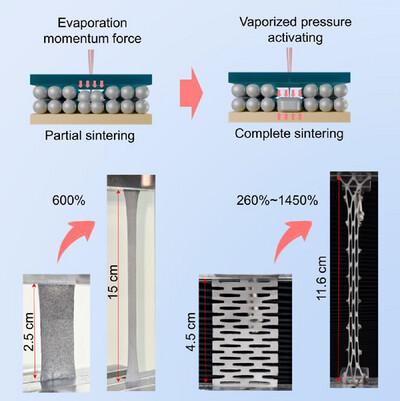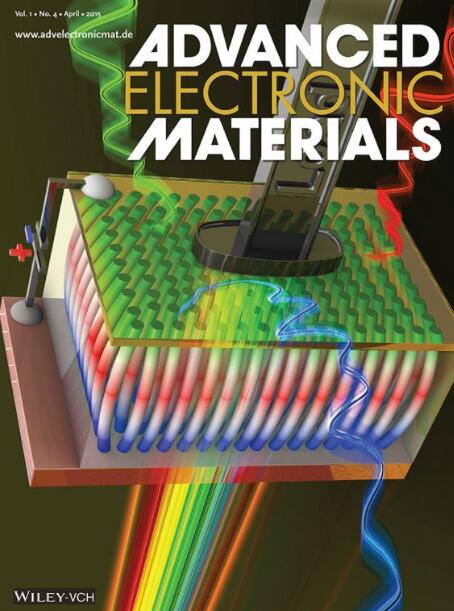Laser-Driven Transfer Printing of Hyper-Stretchable Liquid Metal Electronics
IF 5.3
2区 材料科学
Q2 MATERIALS SCIENCE, MULTIDISCIPLINARY
引用次数: 0
Abstract
Liquid metal (LM) alloys can conform to large deformations for flexible and stretchable electronics. The high surface energy and low wettability of LM hinder the binding with flexible substrates, making it difficult to precisely pattern LM-only electronic devices. Herein, a laser lift-off-and-fuse (LLOF) process is proposed for transfer printing LM onto flexible substrates with a patterning resolution of hundreds of microns. Liquid metal nanoparticles (LM NPs) from the donor substrate are transferred and subsequently activated on the receiver substrate by laser pulses, resulting in uniform, conductive patterns with arbitrary designs. Specifically, the LLOF method involves two steps: a transferring step by high-fluence laser pulses and an in situ activation step by low-fluence laser pulses. The LLOF method is additive and free of thermal or chemical damage to soft substrates. It brings superior quality and processability for high-precision LM flexible devices on stretchable substrates. Multiphysics numerical simulations provide a detailed demonstration of the transient vaporization of LM NPs and reveal a dynamic vapor-driven droplet transfer process. Finally, LM flexible devices with high conductivity, large ultimate strain, excellent fatigue resistance, and controllable strain conductivity are demonstrated, respectively.

超可拉伸液态金属电子学的激光驱动转移打印
液态金属(LM)合金可以适应柔性和可拉伸电子产品的大变形。LM的高表面能和低润湿性阻碍了与柔性衬底的结合,使得仅LM的电子器件难以精确地图案化。本文提出了一种激光升降熔丝(LLOF)工艺,用于将LM转移到具有数百微米图案分辨率的柔性基板上。来自供体衬底的液态金属纳米粒子(LM NPs)通过激光脉冲转移并随后在受体衬底上激活,从而产生具有任意设计的均匀导电图案。具体来说,LLOF方法包括两个步骤:高通量激光脉冲的转移步骤和低通量激光脉冲的原位激活步骤。LLOF方法是添加剂,对软基材没有热或化学损伤。它为可拉伸基板上的高精度LM柔性器件带来了卓越的质量和可加工性。多物理场数值模拟提供了LM NPs瞬态汽化的详细演示,并揭示了一个动态的蒸汽驱动液滴传递过程。最后,分别展示了具有高电导率、大极限应变、优异的抗疲劳性能和可控应变电导率的LM柔性器件。
本文章由计算机程序翻译,如有差异,请以英文原文为准。
求助全文
约1分钟内获得全文
求助全文
来源期刊

Advanced Electronic Materials
NANOSCIENCE & NANOTECHNOLOGYMATERIALS SCIE-MATERIALS SCIENCE, MULTIDISCIPLINARY
CiteScore
11.00
自引率
3.20%
发文量
433
期刊介绍:
Advanced Electronic Materials is an interdisciplinary forum for peer-reviewed, high-quality, high-impact research in the fields of materials science, physics, and engineering of electronic and magnetic materials. It includes research on physics and physical properties of electronic and magnetic materials, spintronics, electronics, device physics and engineering, micro- and nano-electromechanical systems, and organic electronics, in addition to fundamental research.
 求助内容:
求助内容: 应助结果提醒方式:
应助结果提醒方式:


